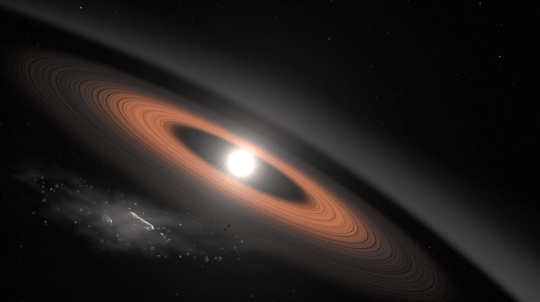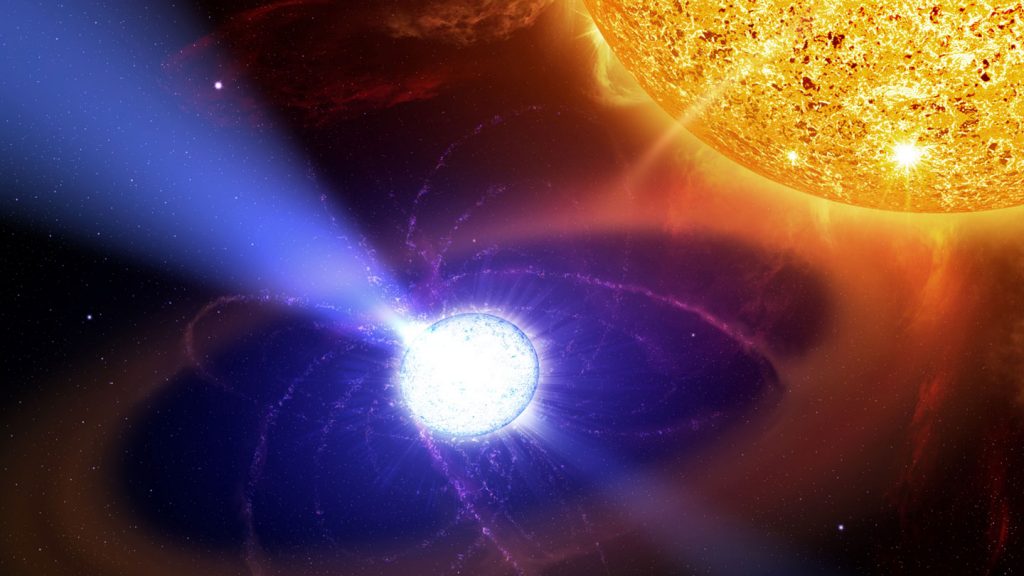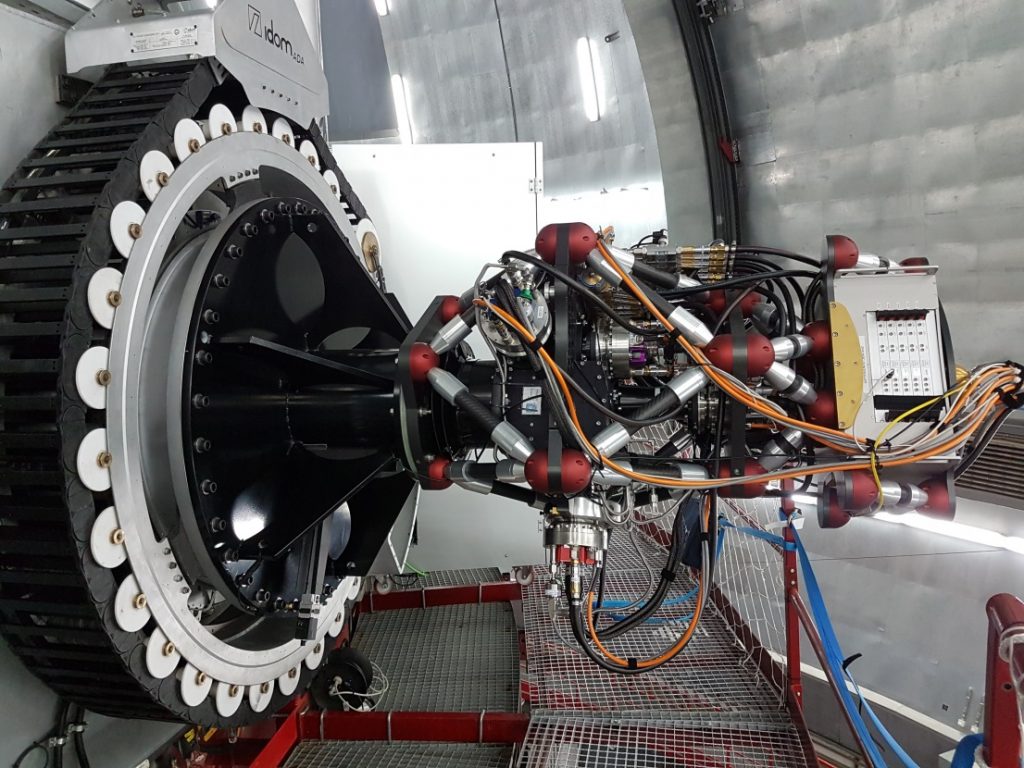The fastest spinning confirmed white dwarf, according to a team of researchers conducted by the University of Warwick, is a white dwarf star that rotates once every 25 seconds.
They’ve estimated the star’s spin period for the first time, revealing that it’s an extremely rare occurrence of a magnetic propeller system: the white dwarf is grabbing gaseous plasma from a nearby partner star and hurling it into space at a speed of almost 3000 kilometres per second.
The study was funded by the Leverhulme Trust and the Science and Technology Facilities Council (STFC), part of UK Research and Innovation.

A white dwarf is a star that has lost its outer layers and is now shrinking and cooling over millions of years. The star seen by the Warwick team, LAMOST J024048.51+195226.9 – or J0240+1952 for short – is the size of the Earth but is thought to be at least 200,000 times more massive. It is part of a binary star system, and its massive gravity is attracting material in the form of plasma from its larger companion star.
Previously, this plasma was dropping at tremendous speed onto the white dwarf’s equator, providing the energy for its fast spin. In comparison, one rotation of the Earth takes 24 hours, whereas J0240+1952 takes only 25 seconds. That’s about 20% faster than the white dwarf, which completes a rotation in slightly over 29 seconds.
J0240+1952 did develop a magnetic field in its course of evolution, which serves as a shield, causing the majority of the falling plasma to be propelled away from the white dwarf. The remainder will flow to the magnetic poles of the star.
“J0240+1952 will have completed several rotations in the short amount of time that people take to read about it,” stated lead author Dr Ingrid Pelisoli at the University of Warwick. Because the rotation is so fast, the white dwarf must have a mass that is greater than typical to stay together and not be pulled apart.

“It is pulling material from its companion star due to its gravitational effect, but as that gets closer to the white dwarf, the magnetic field starts to dominate. This type of gas is highly conducting and picks up a lot of speed from this process, which propels it away from the star and out into space.”
J0240+1952 is the second magnetic propeller white dwarf discovered in seventy years, thanks to a combination of powerful detectors that allowed scientists to catch sight of the star. The University of Warwick team used the highly sensitive HiPERCAM device to visualise the star. This was installed on the world’s largest operational optical telescope, the 10-metre diameter Gran Telescopio Canarias in La Palma, to capture as much light as possible.
“These kinds of studies are possible thanks to the unique combination of the fast imaging capability of HiPERCAM with the largest collecting area in the world provided by GTC,” said Antonio Cabrera, Head of GTC Science Operations.

Co-author Professor Tom Marsh from the University of Warwick Department of Physics adds: “It’s only the second time that we have found one of these magnetic propeller systems, so we now know it’s not a unique occurrence. It establishes that the magnetic propeller mechanism is a generic property that operates in these binaries if the circumstances are right,” co-author Professor Tom Marsh added.
“The second discovery is almost as important as the first as you develop a model for the first, and with the second, you can test it to see if that model works. This latest discovery has shown that the model works really well; it predicted that the star had to be spinning fast, and indeed it does.”


